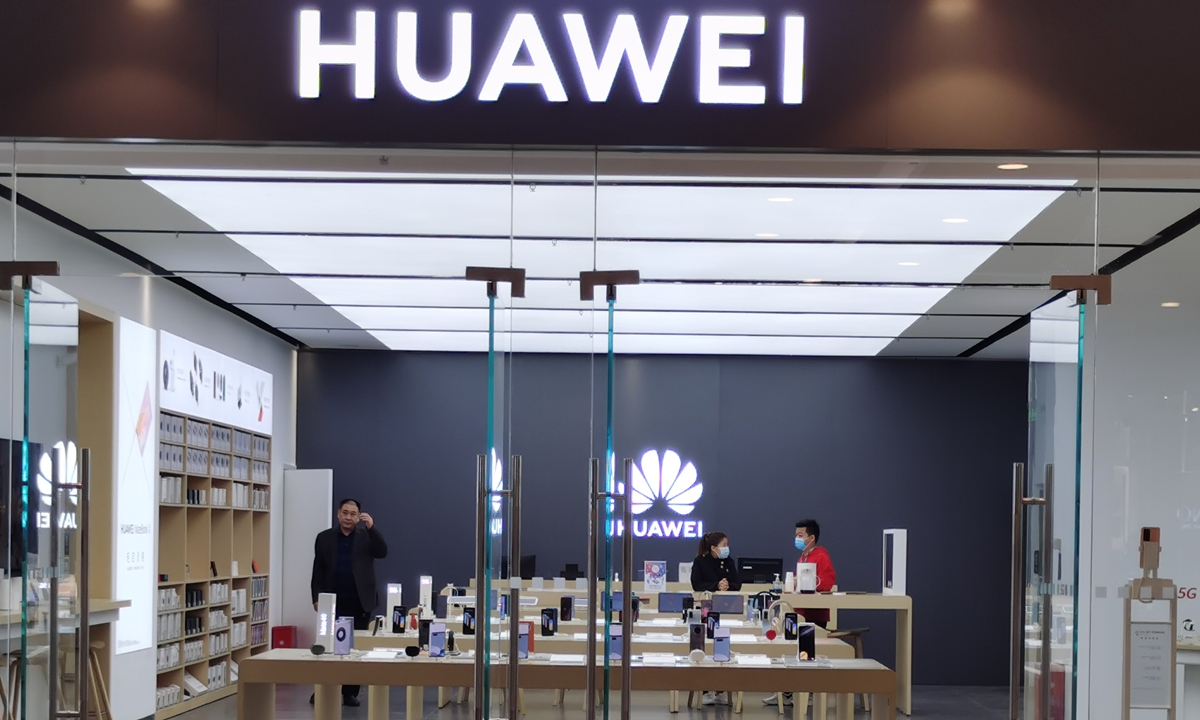
View of a Huawei store in central China’s Henan province in November 2020 Photo: cnsphoto
Huawei is due to launch its new MateX2 series folding device on Monday, a move that analysts say shows the Chinese tech giant’s ambition to move forward with its high-end phone series despite the U.S. ban on cutting its main supplies chips and hurt your chip design business.
According to Huawei’s previous announcement, the next foldable phone from the Chinese brand MateX2, with its Kirin 9000 chipset developed by itself, will be presented during an online event on Monday night.
It is also the first new product the company will launch after the Chinese Lunar New Year.
“The launch of the new product demonstrates that the company cannot give up on the next-generation smartphone market, at least in the short term,” Ma Jihua, a veteran industry analyst and close follower of Huawei, told Global Times on Sunday.
Reuters reported in late January that Huawei is in the early stages of negotiations to sell its premium P and Mate smartphone series, citing two people with direct knowledge of the matter. The report also said the move could lead to Huawei “eventually going out of the high-tech smartphone manufacturing business”.
Huawei denied the reports, saying it has no plans to sell its mobile business, the company told the Global Times earlier.
Ma noted that the continued launch of cutting-edge products may also indicate that Huawei is carrying out research and development on its Kirin self-development chip series, despite the U.S. ban, as only supported by its own capacity. chip chip Huawei can update the capabilities of its phones and compete in the smartphone market.
However, analysts said the severe chip shortages will still drag their phone shipments and cause a loss of market share.
According to a report by Nikkei Asia, Huawei will cut its smartphone production by more than half in 2021 amid a severe chip shortage. Huawei suppliers have been reported to have been notified to reduce production, and the company expects cell phone shipments in 2021 to drop by more than 60 percent to about 70 million units.
“The drop in phone shipments is likely to lead to a 20-30 percent drop in revenue next year,” predicted Ma, while noting that Huawei’s profit margin could increase.
